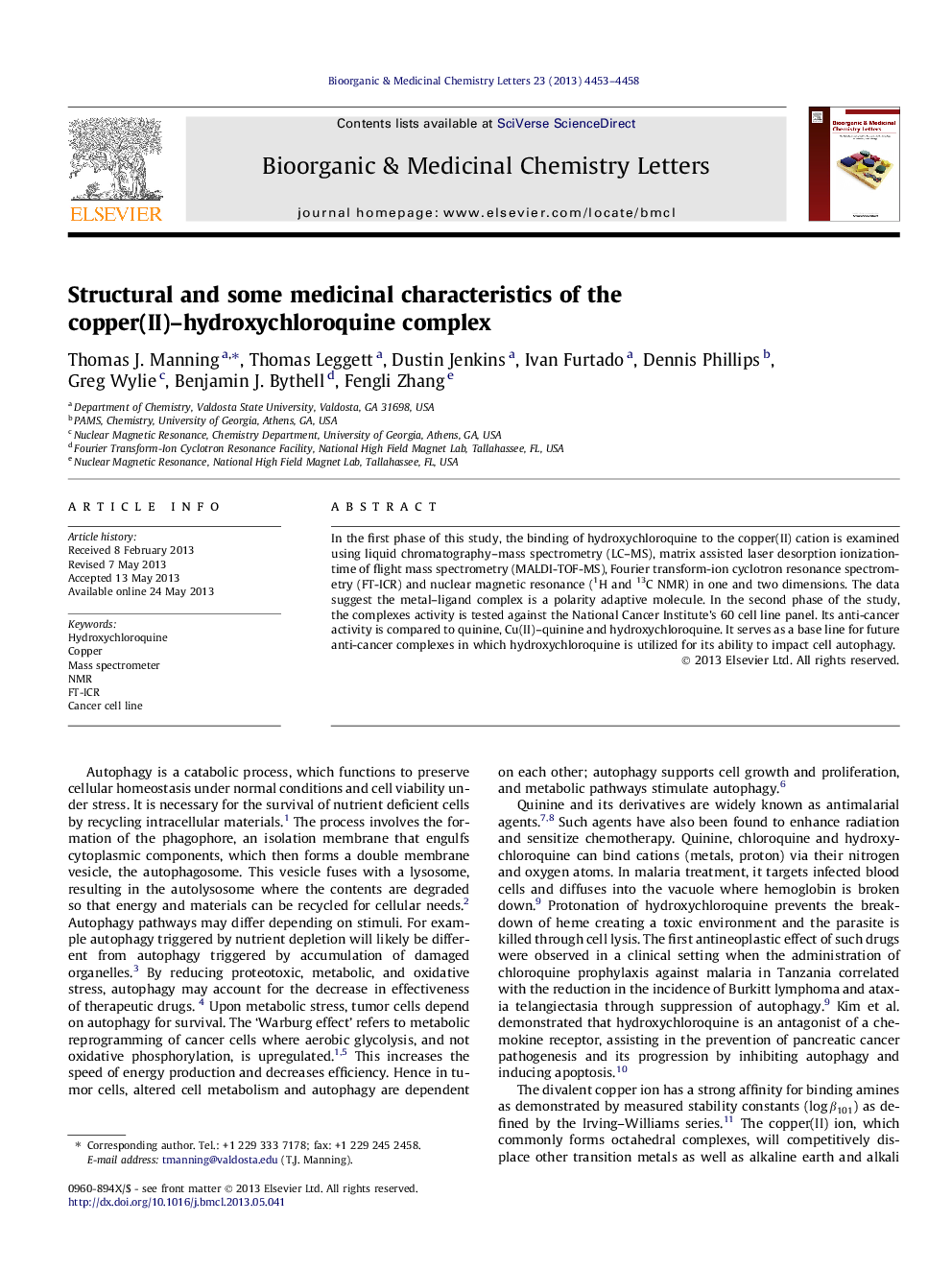| Article ID | Journal | Published Year | Pages | File Type |
|---|---|---|---|---|
| 10593587 | Bioorganic & Medicinal Chemistry Letters | 2013 | 6 Pages |
Abstract
In the first phase of this study, the binding of hydroxychloroquine to the copper(II) cation is examined using liquid chromatography-mass spectrometry (LC-MS), matrix assisted laser desorption ionization-time of flight mass spectrometry (MALDI-TOF-MS), Fourier transform-ion cyclotron resonance spectrometry (FT-ICR) and nuclear magnetic resonance (1H and 13C NMR) in one and two dimensions. The data suggest the metal-ligand complex is a polarity adaptive molecule. In the second phase of the study, the complexes activity is tested against the National Cancer Institute's 60 cell line panel. Its anti-cancer activity is compared to quinine, Cu(II)-quinine and hydroxychloroquine. It serves as a base line for future anti-cancer complexes in which hydroxychloroquine is utilized for its ability to impact cell autophagy.
Related Topics
Physical Sciences and Engineering
Chemistry
Organic Chemistry
Authors
Thomas J. Manning, Thomas Leggett, Dustin Jenkins, Ivan Furtado, Dennis Phillips, Greg Wylie, Benjamin J. Bythell, Fengli Zhang,
